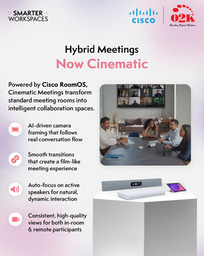How to Pick the Proper Projector

A version of this article exists on rAVe [PUBS], written by Mark Coxon
It’s 2024 and despite the proliferation of microLED and the high availability of low bezel LCD screens, projectors are still alive and well in the AV industry. Rumors of their death have been circulated for years, yet, just like they say in Monty Python, they’re “not dead yet!”
Interestingly enough, I find that specifying the proper projector is still somewhat of a mystery for a lot of AV professionals, so I thought I’d give a few tips to help demystify this often misunderstood AV staple. Is a 15,000-lumen projector bright? It depends on how large of an image you are creating. You first need to determine your image size, and then divide the total brightness by the screen area in order to get a feel for how bright the image will actually be.
CAUTION: AV MATH AHEAD
Let’s pick an east size for reference: 16 feet wide by 9 feet tall which equates to a 220″ diagonal.
The screen area is 16 feet x 9 feet or 144 square feet. We’ll use this as our basis of discussion throughout, so return to it for reference if needed.
So, with 144 square feet of surface to illuminate, how much brightness do we need?
Tip 1: Start at 100 lumens per square foot
In this example, starting at 100 lumens per square foot yields:
100 lumens per sq/foot x 144 sq/feet = 14,400 lumens.
Why do we start at 100 lumens per foot?
In AV we love to confuse people by taking in different terms for different technologies. Projectors are rated by total brightness in lumens and screens like LCD and dvLED are rated in nits while our ambient light is rated in lux.
Are lux and nits related to lumens? The answer is yes.
Lux is a measurement of lumens per square meter.
Nits are a measurement of lux divided by pi.
Most LCD screens in our homes are around 350 nits. We typically find this an acceptable brightness for basic indoor viewing, so let’s use this as a baseline.
Per above, nits X pi equals lux, so 350 nits is equivalent to 1099 lux.
1099 lux or lumens per square meter, divided by 10.76 square feet per square meter equals just over 100 lumens per square foot.
Starting at 100 lumens per square foot gets you a brightness equivalent to a standard LCD display.
Tip 2: Look at lens light loss specs
Most high-end projectors have a choice of lenses with different throw ratios. One of the often overlooked specifications is the light loss of the lens. Some of these lenses can decrease light output by 30% while others may have negligible loss.
Once you know the throw ratio of the lens you need, check the lens specifications for light loss and adjust your projector brightness accordingly. In this case, lets say the light loss is 10%, so we will increase our desired projector brightness from 14,400 lumens by 10% or from 1,440 lumens to 15,840 lumens.
Tip 3: Adjust for headroom
Most laser projectors will last longer if not run at 100% brightness. If you want to build in some extra projector life, you may want to lower the brightness by 10-20%.
Again, in this case, let’s say we’re going to run the projector at 90%, then we’d add 10% more to the brightness spec to maintain the 14,400 on the screen.
Our 15,840 lumen projector is now up to 17,424 lumens.
For tips 4 and 5, click here to read the rest of Coxon's article on rAVe [PUBS].






Please sign in or register for FREE
If you are a registered user on AVIXA Xchange, please sign in